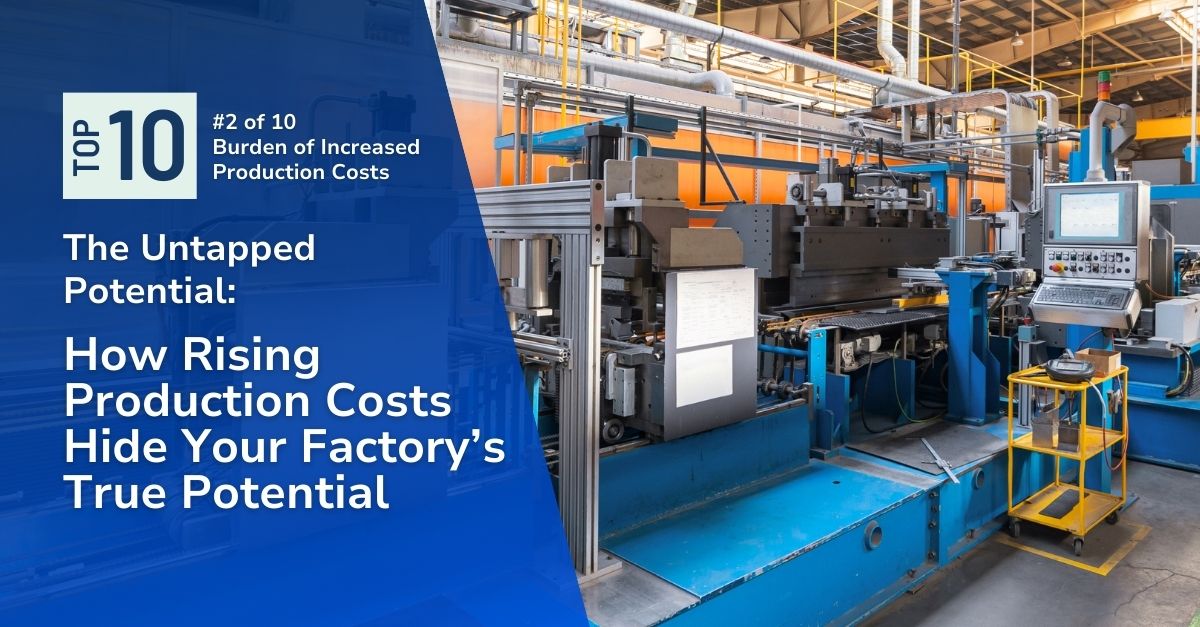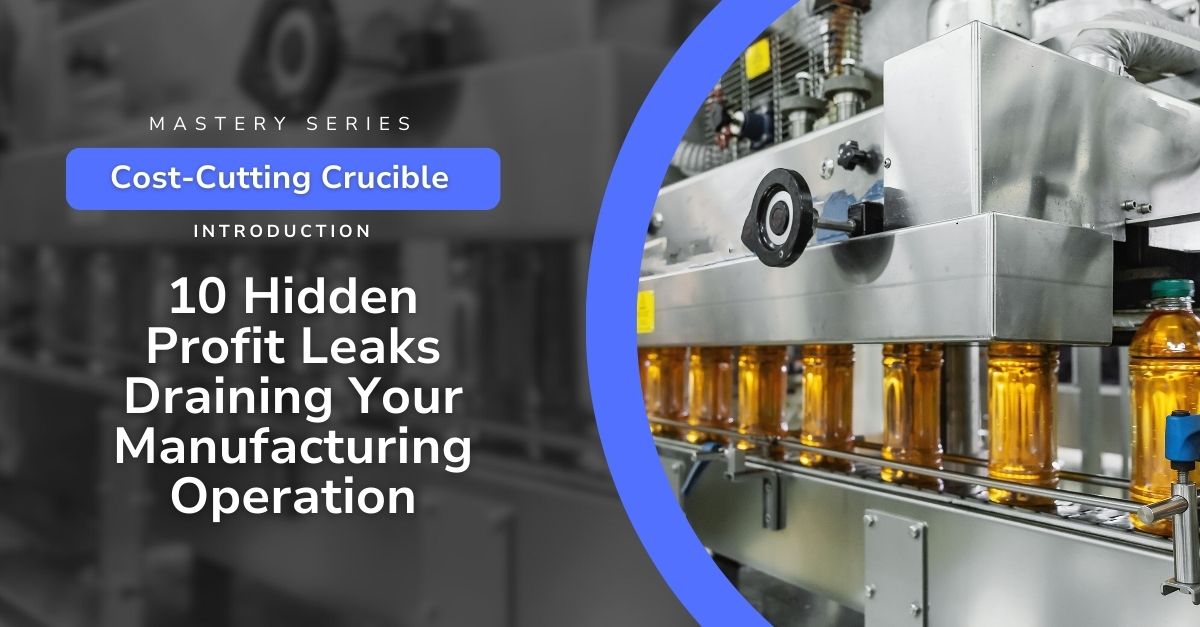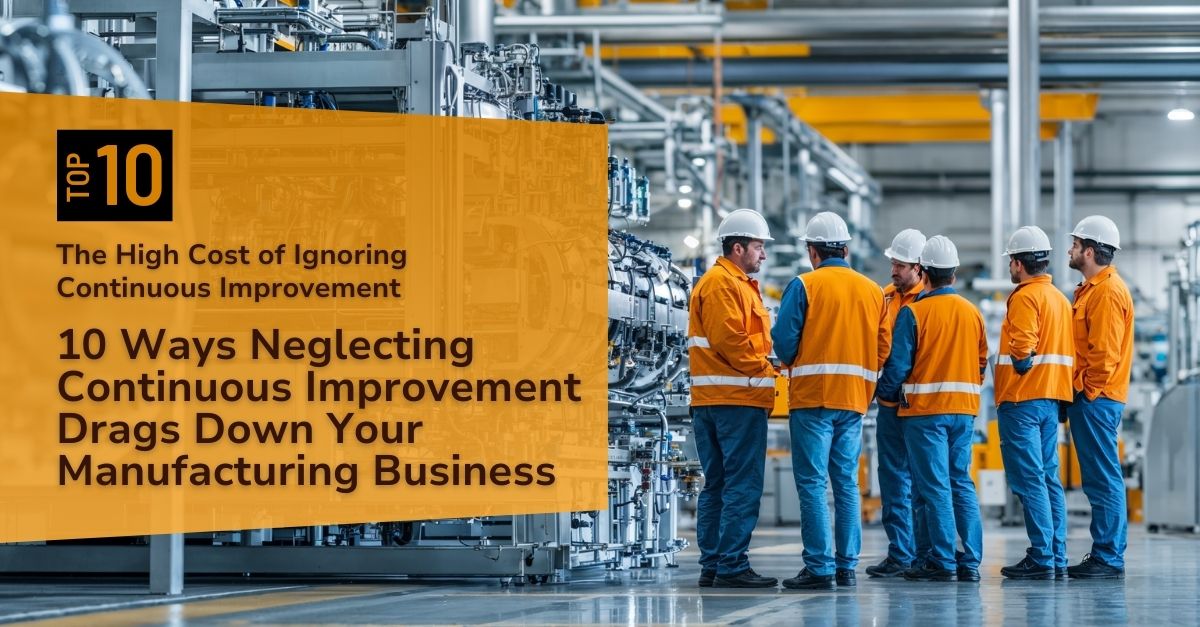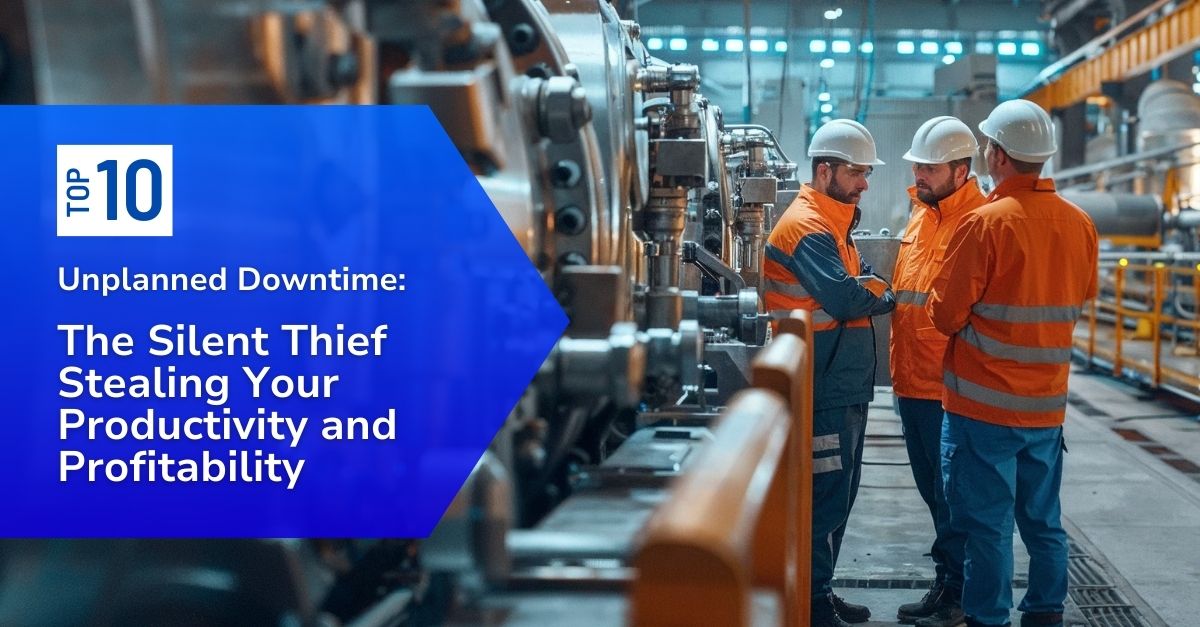
On the shop floor, rising costs often feel like an everyday battle. Machines break down more often, welds don’t hold, and supervisors are stretched thin trying to hit schedules while budgets tighten.
Cost-cutting measures feel like the obvious answer, but they often mask an even more significant challenge: your manufacturing facility isn’t living up to its potential. Underperforming capacity utilization is at the root of the problem.
Studies by the Federal Reserve Board show that the average U.S. manufacturing facility operates at only around 78% of its potential capacity.
This underutilization translates to a staggering amount of lost productivity.
Imagine a powerful production line humming with activity, a well-oiled machine churning out products quickly. But instead, a significant portion of that line sits idle, a silent testament to untapped potential. Every idle minute translates to lost production, delayed shipments, and, ultimately, increased costs per unit produced. The burden of rising production costs isn’t just about raw materials or labor – it’s a symptom of a deeper inefficiency: a factory not operating at its full potential. Let’s consider the ramifications.
1The Substitution Trap:
Negative Impact: Rising input costs push companies to switch to cheaper materials. Lower-quality inputs cause higher defect rates, premature wear on machines, and increased customer complaints. Once those products reach the market, customers notice the drop in quality and brand trust erodes.
Positive Step: Instead of chasing the lowest price, build stronger supplier partnerships that focus on long-term sourcing strategies. Negotiate bulk discounts and work together to find materials that balance cost with consistency. A trusted supplier relationship provides stability that short-term savings cannot.
2Shifting Focus from Customer Satisfaction to Cost Reduction:
Negative Impact: When cost control becomes the only priority, customer needs take a back seat. Products may be cheaper to make but fail to deliver the value customers expect. That gap between what you produce and what customers want opens the door for competitors.
Positive Step: Use value stream mapping to find and eliminate waste in ways that do not affect the customer experience. Involve cross-functional teams so decisions about savings align with brand promises and market expectations. Keeping customer satisfaction at the center of decisions protects long-term growth.
3Increased Risk of Production Stoppages:
Negative Impact: Skipping preventive maintenance or using low-grade parts increases the risk of unexpected breakdowns. When a machine fails without warning, the entire line can grind to a halt, disrupting schedules, stranding labor, and creating late shipments that hurt customer relationships.
Positive Step: Invest in predictive maintenance. IoT sensors and monitoring tools can detect wear and stress before they lead to downtime. Identifying and repairing small issues before they become major failures keeps production moving and reduces the hidden costs of unplanned stops.
4Production Delays and Bottlenecks:
Negative Impact: Poorly timed maintenance, unreliable supply deliveries, and a lack of cross-trained workers create bottlenecks that ripple through the entire line. One machine sitting idle can slow multiple processes downstream, causing missed deliveries and higher overtime costs.
Positive Step: Use scheduling software and bottleneck analysis to smooth production flow. Train workers across multiple functions so they can shift roles quickly when problems arise. A flexible workforce paired with clear scheduling visibility keeps production steady even when setbacks occur.
5Difficulty with Inventory Management:
Negative Impact: Without accurate forecasting, plants swing between overstocking and shortages. Excess inventory ties up cash, clutters storage, and increases the risk of spoilage or obsolescence. On the other side, insufficient stock leads to missed orders and frustrated customers.
Positive Step: Adopt demand planning tools that consider historical trends, seasonal shifts, and real-time sales data. Regularly reconcile inventory counts so digital records match reality. Accurate inventory management frees up capital, reduces waste, and keeps customers supplied.
6Increased Risk of Safety Incidents:
Negative Impact: Rushed jobs, exhausted employees, and poorly maintained equipment create unsafe conditions. A single accident can trigger medical costs, fines, and investigations, not to mention the human cost of injury. Production delays often follow, compounding the damage.
Positive Step: Build a zero-incident culture where safety is a shared responsibility. Provide training that reinforces safe practices, keep equipment properly serviced, and ensure workers can report hazards without fear of reprisal. A safe workplace supports both people and production.
7Difficulty Meeting Customer Demand:
Negative Impact: Production delays, material shortages, and quality issues lead to broken commitments. Customers who experience repeated missed deadlines or inconsistent quality often look for new suppliers. Winning them back is far harder than keeping them satisfied in the first place.
Positive Step: Be proactive in communication. If delays are likely, inform customers early and offer realistic alternatives. Use demand analytics to predict buying patterns and align capacity with what customers are likely to need. Transparent, reliable communication protects loyalty even during challenges.
8Even Higher Losses to Scrappage:
Negative Impact: Rushing orders with cheap materials or fatigued crews raises scrap and rework rates. Every defective product wastes material, labor, and machine time. Over time, scrap silently eats away at margins more than many managers realize.
Positive Step: Strengthen quality control at every stage of the process instead of relying only on final inspection. Empower workers to stop a job if they see a defect forming. Training and accountability around doing it right the first time reduces waste and increases profitability.
9Pressure to Do More With Less:
Negative Impact: Smaller crews, shrinking budgets, and rising expectations force employees to carry heavier workloads. Burnout and turnover rise, leaving less experience on the floor and creating an even larger burden on those who remain. Productivity eventually suffers.
Positive Step: Use automation for repetitive or physically demanding tasks to relieve pressure on teams. Introduce cross-training programs so employees can step into different roles as needed. A workforce that feels supported and capable of adapting is far less likely to burn out.
10Band-Aid Fixes Become The Norm:
Negative Impact: When teams are stuck in constant firefighting mode, root causes never get addressed. Problems keep resurfacing, often at greater cost each time. The cycle of temporary fixes prevents lasting improvement and drains resources.
Positive Step: Commit to structured problem-solving. Use tools like the “5 Whys” or root cause analysis sessions to identify why failures happen. Give teams the authority to implement long-term fixes that address the problem at its source rather than just the symptom.
The Road to Operational Excellence
Increased production costs are a symptom, not the cause. They’re the flashing red light on the dashboard, alerting you to a deeper problem within your manufacturing engine. Underperforming capacity utilization is the culprit – a factory not operating at its full potential. It’s time to look beyond spreadsheets and focus on real-time data to see your operations holistically. Think of it as putting on a new pair of glasses – suddenly, the true cause of lost profits, delays, and stressed-out employees becomes crystal clear.
How POWERS Can Help
At POWERS, we’re passionate about helping manufacturers unlock their operational potential. Our cutting-edge technology platform provides real-time monitoring, detailed analytics, and machine-learning insights, designed to illuminate the hidden inefficiencies plaguing your factory. We help you:
- Identify the root causes of underperforming capacity utilization: Gain a deeper understanding of asset performance and see where production is falling short.
- Optimize production flow and eliminate bottlenecks: Visualize and track your material flow to find where your process slows or stalls.
- Reduce downtime and enhance efficiency: Get proactive alerts on potential machine failures before they cause costly disruptions.
- Empower your teams with actionable data: Give everyone from front-line operators to executives the real-time information needed to make data-driven decisions.
The Bottom Line
Don’t let rising production costs silently sabotage your business. They’re a symptom of a more significant issue – your factory isn’t producing as much as it could. The solution lies in unlocking the actual capacity of your existing assets and eliminating the obstacles that prevent your facility from operating at peak efficiency. Contact POWERS today and let us partner with you on your journey to operational excellence.
At POWERS, our management consultants partner with manufacturers to uncover these hidden opportunities. Through our DPS platform, we provide the tools and visibility needed to eliminate bottlenecks, reduce downtime, and empower frontline leaders with actionable insights. Together, we help facilities run closer to their true potential and achieve measurable results.
Don’t allow lost revenue and eroded profits to cripple your potential. Contact POWERS today for a free consultation and chart a path towards greater profitability and sustainable growth: +1 678-971-4711 or info@thepowerscompany.com.
Sources and Further Reading
Continue Reading from this Mastery Series
- Part 1 – The Price of Lost Revenue and Profit Resulting from Underutilized Capacity
- Part 2 – How Rising Production Costs Hide Your Factory’s True Potential
- Part 3 – Poorly Managing Resources is Stealing Your Profits
- Part 4 – Break the Quality Struggle Cycle to Fix This Shop Floor Frustration
- Part 5 – From Chaos to Capacity: How to Tame Turnover and Optimize Your Operations
- Part 6 – Manufacturing Nightmares: When Your Shop Floor Can’t Keep Up
- Part 7 – When Supply Chain Disruptions Reveal Your True Capacity
- Part 8 – Unlocking Efficiency When Sustainability Meets the Shop Floor
- Part 9 – Understaffed and Underperforming on the Shop Floor
- Part 10 – How Blind Spot Vulnerabilities Impact Your Shop Floor’s Efficiency







